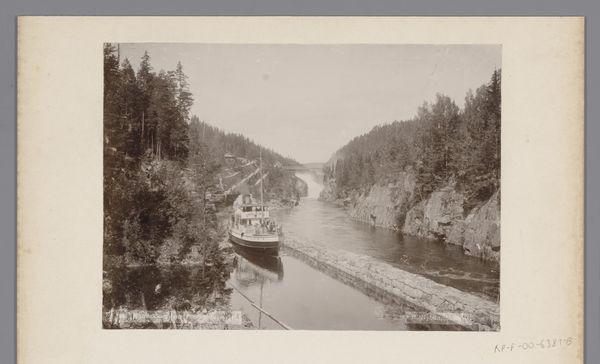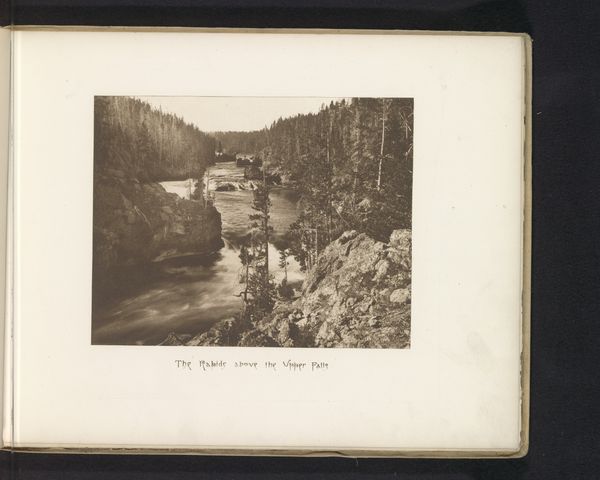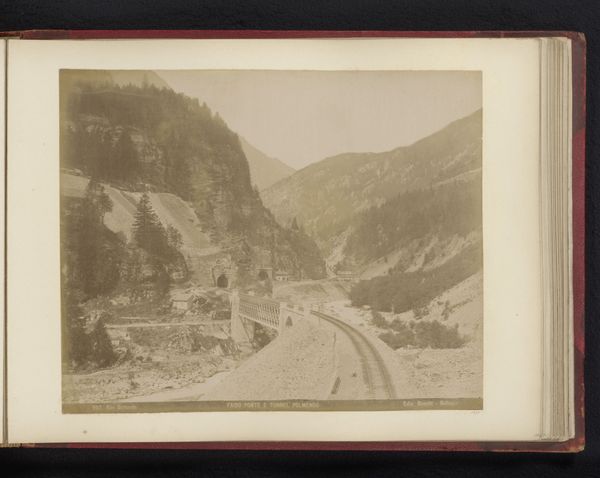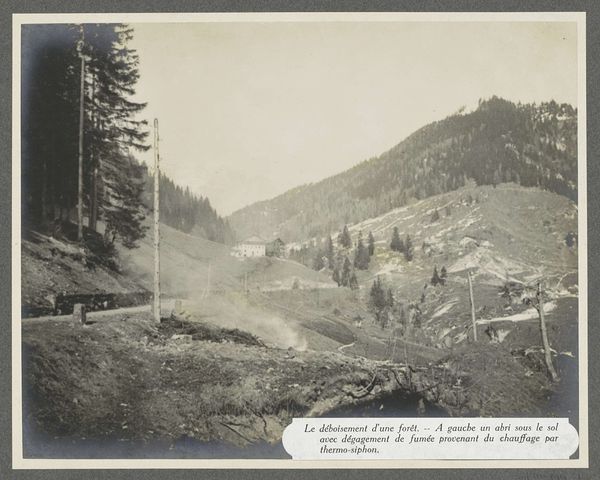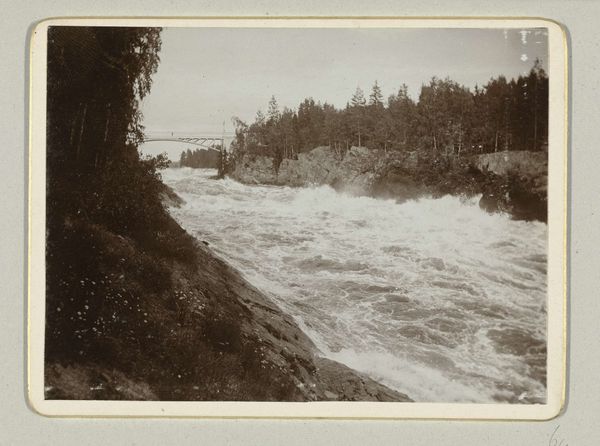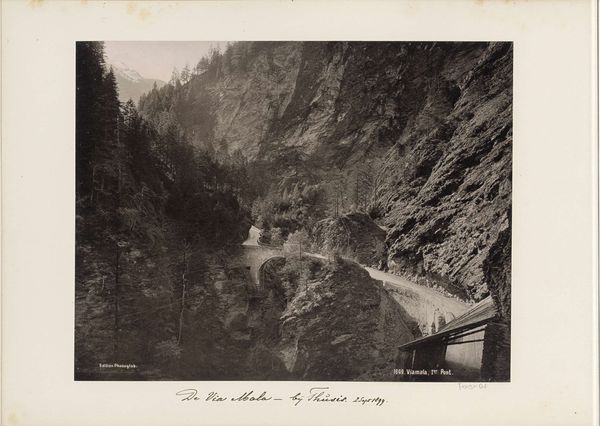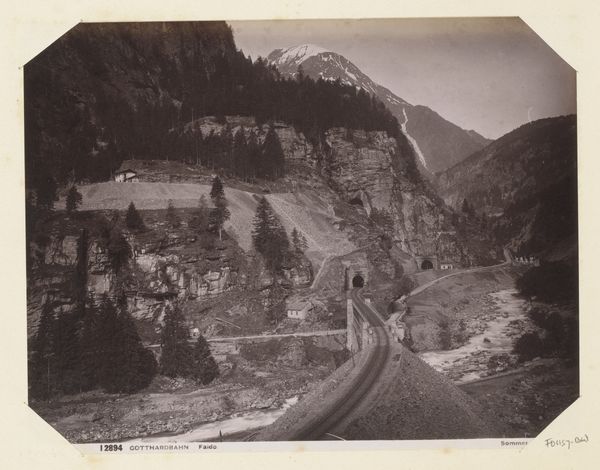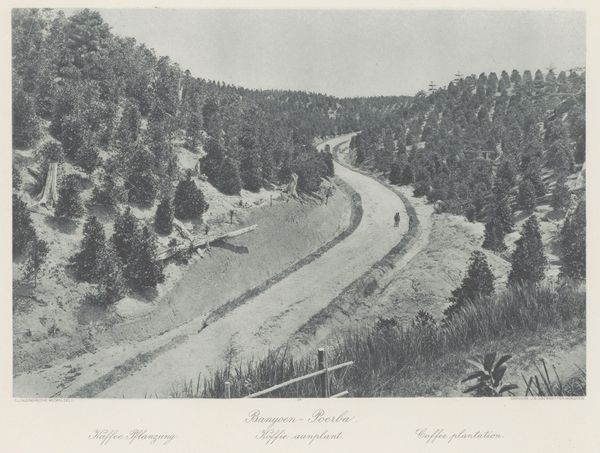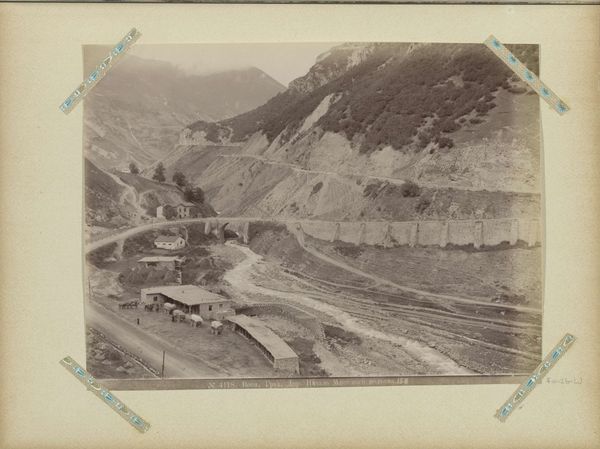!["Bandakkanalen", Telemark [of Telemarken], Noorwegen by R. Nyblin](/_next/image?url=https%3A%2F%2Fd2w8kbdekdi1gv.cloudfront.net%2FeyJidWNrZXQiOiAiYXJ0ZXJhLWltYWdlcy1idWNrZXQiLCAia2V5IjogImFydHdvcmtzLzYxODJjMDE2LWRhMDctNGI4Zi05NDk1LWEzODgzZDgzMWJhYS82MTgyYzAxNi1kYTA3LTRiOGYtOTQ5NS1hMzg4M2Q4MzFiYWFfZnVsbC5qcGciLCAiZWRpdHMiOiB7InJlc2l6ZSI6IHsid2lkdGgiOiAxOTIwLCAiaGVpZ2h0IjogMTkyMCwgImZpdCI6ICJpbnNpZGUifX19&w=3840&q=75)
photography, gelatin-silver-print
#
pictorialism
#
landscape
#
photography
#
gelatin-silver-print
#
realism
Dimensions: height 157 mm, width 218 mm, height 380 mm, width 311 mm
Copyright: Rijks Museum: Open Domain
Curator: This gelatin-silver print, "Bandakkanalen", Telemark [of Telemarken], Noorwegen, by R. Nyblin, was created sometime after 1896. The scene offers us a serene vista. What strikes you first? Editor: The way the image is split almost perfectly in half – the man-made canal versus what appears to be a waterfall on the other side. It’s a sharp dichotomy, almost a symbolic stand-off between nature and industrialization. Curator: Precisely. It is tempting to examine this landscape through the lens of human intervention shaping the natural world. This image makes me think of labour exploitation, extraction of natural resources, and technological advancements imposed upon the working class during that era. This canal becomes a testament to human efforts, extracting labor from vulnerable populations. The photograph might represent an era of profound transformations and also a story of global resource management. Editor: From a symbolic standpoint, I can't help but notice the water element itself. Water often signifies purification, change, the unconscious. And seeing how it flows through both channels – the natural and the constructed – is a potent visual statement on inevitable transformations, one that humankind directs versus one that unfolds naturally. The trees, framing the view, act as guardians of a liminal space. Curator: The photograph reflects a moment when industrial progress dramatically transformed Norway, highlighting conflicts about sustainability and traditional lifeways versus industrialized modes. The visual symmetry you pointed out really foregrounds a deeper narrative about socio-economic and ecological struggles from that period. Editor: Do you think there is tension between pictorialism and realism, style-wise? I suppose Nyblin aimed for an aesthetically pleasing image, perhaps at the cost of documenting the unvarnished truth about these societal disruptions. Curator: Style cannot but express the context that produced the art piece. But regardless of style, it seems difficult to forget what water as an elemental resource means when imagining landscapes as they reflect social challenges. It offers new views, inviting continuous revisions of conventional perspectives on progress. Editor: The photograph definitely leaves me contemplating how symbols persist across generations, reflecting evolving human relationship with nature. Curator: And it prompts consideration of whether “progress” serves equality for all, offering visual representations of historical changes.
Comments
No comments
Be the first to comment and join the conversation on the ultimate creative platform.
